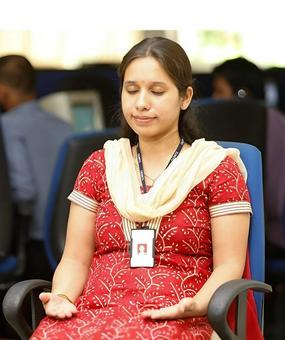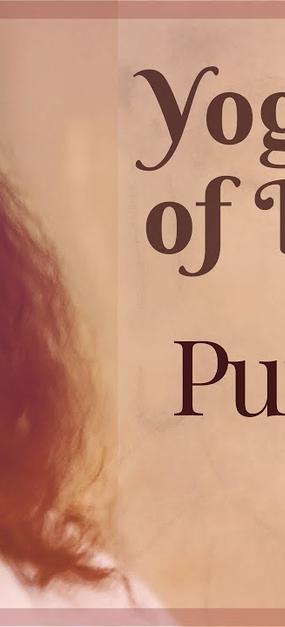- “Join Power Yoga today: Develop your core, strength, focus, balance, purpose…”
- “21 days Power Yoga weight loss challenge!”
- “Join Core Power Yoga: Weight loss up to 10 kg!”
- “Learn Power Yoga: Tone muscles, burn calories”
Those power yoga ads definitely sound magical – as if in less than a month you could audition to be a model in one of those TV ads! For the uninitiated, we have put together seven FAQs on what power yoga is and the differences between yoga and power yoga.
1. I had never heard of power yoga till a fitness instructor in our gym offered to teach it. What is power yoga?
Power yoga is a vinyasa-based (where flow and breath are matched) contemporary yoga technique that focuses on movement, cardio output, and strengthening exercises to achieve various objectives ranging from toning and strengthening the body to weight-loss. It is a dynamic physical workout.
2. Isn’t that what yoga is all about? What is the difference between power yoga and conventional yoga?
There is more movement in power yoga poses. Power yoga trainers teach you to move swiftly between poses matching your breath to your movement. The momentum is fast as the objective of the workout is to build your core and to achieve physical fitness. The stretches are vigorous, and the workout is intense with almost no breaks in between. You will feel like you attended a rigorous physical exercise session at the end of it.
Conventional yoga poses go beyond the physical body. The asanas are not just meant to give your body shape and strength or to make you look slim. The focus is to prepare your body for pranayama and meditation. Consequently, yoga stresses on maintaining the poses for a length of time, slowing the breathing cycle (so you take fewer breaths) over time, and ultimately achieving a communion between your mind, body and spirit. Rest and breathing are an integral part of the poses. So, unlike power yoga, you won’t become breathless but be able to take longer and fewer breaths which will increase your longevity.
So, you see the objective of yoga for beginners is not so much physical fitness as it is achieving an overall equilibrium that promotes balance in all aspects of life. Yoga is not merely considered a physical exercise but a way of life and a means to attaining all you want in life. In this regard, it will help to know about the five sheaths or layers (Pancha Kosha) – food, breath, mind, intellect and bliss – that complete a human being. You can read about Pancha Kosha Meditation to understand this in more detail.
3. Alright. But does it mean I will not be physically fit if I do conventional yoga poses?
Not at all. While the focus of Hatha Yoga techniques is not to simply build your body, it is definitely not easy to maintain yourself in any pose for long. Your physical stability as well as your mental tenacity to endure in the poses will be tested to the hilt. It requires a lot of stamina to maintain yourself in poses. So, there is no question of not achieving physical fitness. What we’re saying is that it is not the be all and end all of the practice. Achieve physical fitness and then go farther and deeper into the practice – achieve mental balance and spiritual communion as well.
4. Can you explain this in more detail?
Conventional yoga does not stop with the workout on your body while power yoga stays at the level of the body. Yoga is much more comprehensive. It begins with some asanas (poses) to prepare the body for the pranayama (breathing exercises) and Kriyas and then finally your body and mind are aligned for meditation. This time-tested process ‘asana → pranayama → Kriyas -> meditation’ ensures organic flow of energy to your body, mind and spirit.
5. But, how come the power yoga poses look quite similar to the yoga poses we have been used to seeing?
That’s because power yoga is based on Hatha Yoga, which is part of conventional yoga poses. So, you will see the Sun Salutations Pose, Downward Dog Pose and the Plank Pose among other conventional yoga poses in power yoga poses as well. The difference lies in the focus of the pose. While regular yoga poses emphasize both physical and mental flexibility and balance, power yoga focuses on building strength and maintaining a fast-paced flow.
6. What sort of poses will you find in power yoga?
You won’t find one set of common poses that constitute power yoga poses. It depends on the personality and philosophy of the teacher. Power yoga poses such as Plank Pose, Cobra Pose, and Downward Facing Dog Pose are suitable for beginners. Four limbed Staff Pose or Chaturanga Dandasana may be considered a slightly more advanced pose in power yoga.
7. Is there anything else in conventional yoga that is not included in power yoga poses?
- One main aspect of yoga is the pranayama (breathing exercises). This is what makes the experience of yoga complete. Pranayamas help you internalize the yogic experience so your mind and spirit are as moved as your body is. There is more to wellness than the body being strong and in good shape; when you care for these other elements, the results are far-reaching and all-embracing.
- Another important aspect of yoga is that it helps exercise both internal (like the heart, lungs, brain, liver and kidneys) and external organs. Power yoga focuses only on the external ones.
- Perhaps the best thing about yoga is its inclusiveness. People of all ages can participate and enjoy the experience. While it is true that people with medical conditions should take some precautions with some of the poses, it is more inclusive in its approach than power yoga, with its vigorous moves, is.
8. How is the experience in a regular yoga class different from that in a power yoga class?
No experience can be fully explained. However, you should emerge from a yoga class feeling refreshed and alive rather than just feeling like you ran the fastest mile! One will enable you to come out feeling rested and rejuvenated, the other is more likely to require a good amount of rest!
Which one you choose will depend on your final objective.
The Art of Living believes that yoga is a means of achieving physical, mental and spiritual wellness in conjunction with pranayamas and meditation.
Find a Sri Sri Yoga program at an Art of Living center near you.
Write to us at info@srisriyoga.in to receive more information on our programs or to share feedback.
Practicing yoga helps develop the body and mind, yet is not a substitute for medicine. It is essential to learn and practice yoga under the supervision of a trained yoga teacher. In case of any medical condition, practice yoga only after consulting your doctor and a Sri Sri Yoga teacher.
Written with inputs from Meena Waghray, Faculty, The Art of Living.




















